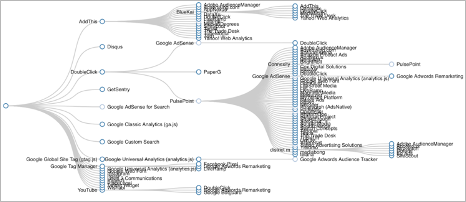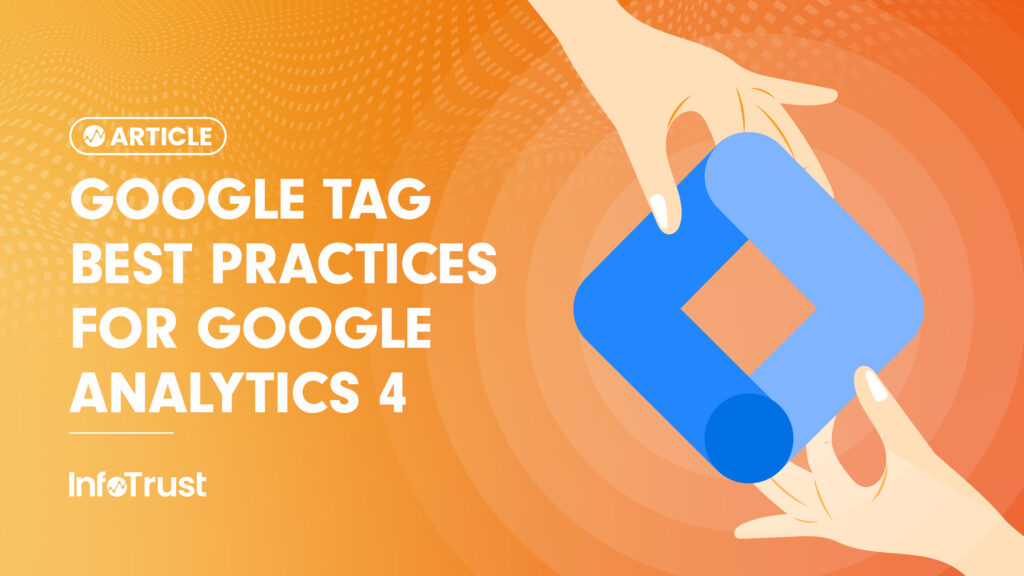Online media spend in the US exceeded 145 billion USD in 2019, up almost 20% from the previous year. As online media continues to become a larger share of the marketing mix, we’ve seen many organizations transform the way they plan and buy their online media. This includes bringing media teams in-house to be more efficient across the organization and reduce the layers between a marketer and consumer. As these brand marketers are upskilled across the media landscape and their marketing spend continues to move online, the need for proper data collection and online measurement is critical to the long-term success of the organization.
At InfoTrust, we help some of the top organizations in the world advance the way they utilize analytics to drive more efficient and effective marketing spend. We’re in a unique spot as one of Google’s only Premier Analytics Partners that chooses to not sell media. This allows us to bring a unique, unbiased approach to our partners by helping them optimize their marketing mix to drive revenue from their most profitable customers.
In this article, we share four key actions of how InfoTrust can help an organization ensure media spend is optimized for long-term success.
Step 1: Data Collection and Validation
We commonly talk with organizations that have ten or more different data sources and over 50 different platforms/tags on their site. This can make it challenging to accurately collect, validate, and make decisions from a consumer’s online activity. By utilizing our proprietary platform, Tag Inspector, I was able to pull a scan of a brand’s website to show its surprising complexity.

No matter the size of an organization or their analytics maturity, it’s hard to discover any advanced insights or segmentation on your consumers without having a strong foundation. At InfoTrust, we have an in-depth process called “an audit and implementation” to ensure the organization’s overall business objectives match the way they collect consumer data.
Here are the steps that we recommend if you choose to not use InfoTrust:
- Interview key stakeholders across departments (recommended IT, Marketing, and Analytics) to understand pain points and what specific KPIs are useful.
- Audit of digital analytics and marketing tags across your website using InfoTrust’s proprietary platform, Tag Inspector. This can be called a “clean-up” for your site to only include business driving platforms that are needed to drive revenue. We also recommend including a “governance audit” to make sure your organization is covered for new laws and regulations like CCPA which you can learn about here.
- Standardize how everything is set-up and monitored to ensure accurate and consistent data collection that ladders up to the business marketing objectives. This should be a one-time process for the organization and not something that needs to be repeated every month or quarter. The output of this step is delivered in a detailed implementation guide.
- Plan to involve your development team for the implementation process and any changes that need to be made to your DataLayer to ensure a best-in-class analytics architecture that scales to all brands.
- After the implementation process is completed, test all data collection to ensure accurate data is being reported. Thoroughly document the infrastructure (why platforms exist, who the owners are, etc.) for all current and future members of your IT, Analytics, and Marketing Teams.
Step 2: Optimize the Funnel
Dare I say it…this is where the marketing side of the organization (those buying online ads) and the analytics side of the organization (those improving website visitor experience) have to work together to optimize the marketing funnel. Since Step 1 is complete (Data Collection and Validation), the custom dimensions and events should be in place to understand what your customers are doing on your website. Key tracking areas including what content they are viewing, time on page, scrolling metrics, engagement, add to cart, and purchase abandonment are all in place. This is where the marketing’s media planning, buying, and evaluating process comes in and needs to involve the analytics side of the house. Here are a few considerations as you plan your next media campaign:
- Savvy marketers have moved beyond topline metrics of CPM, CPC, CPV and the like to look at more business-critical data points. Does your company have the tools in place to understand the cost of sales by channel, profitability by product or channel, and true ROAS?
- Decide what customer action you’re looking for after they see or engage with an ad. This is where your website can drive value across the organization including gathering compliant, first-party data which is going to be critical as 3rd party data is diminishing. This will give your organization the ability to create robust 1st party audiences to drive more profitability.
- Determine what defines a successful campaign during media planning and involve all departments. If the media team receives a really low CPM or high viewability, but the campaign does not drive your initial, desired customer action, was it successful? As a common example, a marketing team may receive awards internally and externally for this amazing media campaign, but the analytics team saw no increase in month over month website traffic and online sales.
- Remarket with relevant and timely messages that help your customers purchase your product or service. There are hundreds of different actions that can determine the right creative message to make sure you utilize enterprise platforms like Google Analytics 360 to make the process scalable and effective (please check out my colleague’s article describing these native integrations). As an example, Google Ads rolled out Combined Audiences in 2019, which allows marketers to layer demo, in-market, affinity, and remarketing audiences to target more accurately than ever before.
- Measure, Learn, Report, and Reiterate as a collective organization (Analytics and Media Team).
Step 3: Single View of the Customer
Technology is evolving more rapidly than ever, which is why marketers must take action to plan their organization’s first-party data strategy. The legacy process of buying customer data or using third-party data sources for media advertising is going to be obsolete. Not to mention, the global pandemic of 2020 has significantly impacted all businesses and changed how their customers will engage and purchase products and services in the distant future. According to Boston Consulting Group, an organization that uses data-driven marketing sees an overall cost savings of 16% and 13% in higher revenue, on average. We put together the chart below to showcase how we collaborate with our partners to achieve “The Dream” of a single view of a customer with analytics, which allows any organization to be more effective and efficient in their marketing campaigns. The key is to break away from operating in silos and start to make predictive marketing action based on your customer’s actions.

As our Head of Discovery outlined in a recent webinar, (The Importance of a Single Customer View), here are a few actionable next steps to achieve this dream:
- Define an actionable and measurable goal around your single view of a customer initiative. e. We want to reduce cost per acquisition by 10% and increase basket size by of loyals by 25%.
- Decide and configure the data sources for aggregation including scaling the cloud architecture.
- Build a data lake to store data from different systems and visualize the insights to key stakeholders
- Make your single data source actionable by including data science advanced analysis like prediction, CLV, channel composite metrics, etc.
Step 4: Automation
The above steps require a significant investment of time, resources, and focus from the entire organization, which is why automation is the final step. Finding ways to automate processes will minimize the manual, tedious work that causes errors. Rely on your partners and platforms to bring automation through Machine Learning and Artificial Intelligence. I spent many years in media sales and saw many companies ignore automation because they did not “trust” the algorithm, or they thought the media vendor wanted to sell more ads. Our strong recommendation is to test and see if a feature is able to increase your sales or business metrics.
Dashboarding and visualization is another automated task that can help your teams move away from spreadsheets and make business decisions based on real-time data. At InfoTrust, our Data Engineering team works with companies to bring automation to the way data is collected, understood, and used for future activities. Ask your team to provide a list of activities that seem to be a “waste of time” and investigate whether automation could replace it. Media companies like Google continue to introduce betas so organizations can take advantage of their automated features as well as functionality to drive more impact. Test and learn to gain a competitive advantage and give your team more time to drive the most impactful media campaigns.
Hopefully this article gave good insight into some of the steps you can take to make your media dollars work harder in 2020. Remember: it’s a collective effort that requires a significant amount of time and energy, but an effort that will give your organization an opportunity to succeed in years to come.










